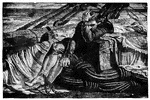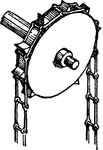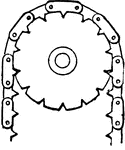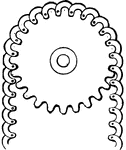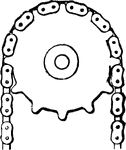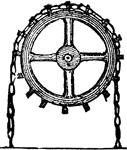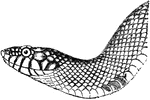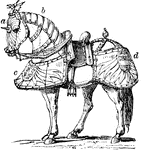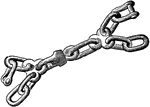
Knots
Chain knot and toggle. The toggle is pulled to tighten up all the loops. Note: the loop of a knot is…

Munson's Hill
"Skirmishing between the pickets of the two armies near Munson's Hill- the hill in the distance. Munson's…

Attack on Confederate Works
"Siege of Vicksburg, attack on the Confederate Works, May 22nd, 1863. Our sketch represents the terrible…

Continental Bills
Fac-simile of the Continental Bills. The paper on which these bills were printed was quite thick, and…

Society of the Cincinnati
"Society of the Cincinnati, member's certificate. This engraving is a fac simile of a certificate, about…

West Point
"West Point in 1780. This view is from a print published in the New York Magazine for 1790.…

Fort Watson
"Site of Fort Watson."—Lossing, 1851 The Siege of Fort Watson was an American Revolutionary War confrontation…
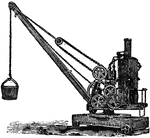
Steam Crane
"A Crane is a machine for lifting weights, worked either by hand or by steam, or by hydraulic power.…

Sympathetic nerve
"The Cervical and Thoracic Portions of the Sympathetic Nerve and their Main Branches. In the center…

Chain Pump
"A Pump is a machine, engine, or device, consisting of an arrangement of a piston, cylinder, and valves,…

Lorica
"A cuirass. The cuirass was worn by the heavy-armed infantry both among the Greeks and Romans. The soldiers…

Lorica
"A cuirass. The cuirass was worn by the heavy-armed infantry both among the Greeks and Romans. The soldiers…
Chain Shot
Two balls or halves of a ball connected by a chain, chiefly used in old naval ordnance to cut down the…
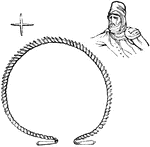
Torques
"An ornament or kind of chain, of gold, twisted spiraly, and bent in a circular form, which was worn…

Clevis
An iron bent in the form of a stirrup, horseshoe, or the letter U with two ends perforated to recieve…

Handcuff
A fastening consisting of an iron ring around the wrist, usually connected by a chain with one on the…
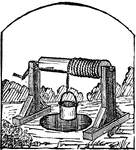
Windlass
A cylinder or roller for raising weights, turned by a crank or lever, with a rope or chain attached…

Bones of the Ear
"Across the middle ear a chain of three small bones stretches from the tympanic membrane to the inner…

Differential Pulley
"In the differential pulley, an endless chain is reeved upon a solid wheel that has two grooved rims…

Leyden Jar
"The most common and, for many purposes, the most convenient form of condenser is the Leyden jar. This…

Diagram of a Leyden jar
"The most common and, for many purposes, the most convenient form of condenser is the Leyden jar. This…

Ear
Interior of the ear. There is external to the head a wide-mouthed tube, or ear-trumpet (a), for catching…

Oligochete Worm
This illustration shows the arrangement of the nervous material in the anterior end of an Oligochete…

Tapeworm
This diagram shows some stages in the life history of the tapeworm. A, Cysticercus or Bladderworm stage,…

Annelid
This diagram shows the longitudinal section of the anterior end of the annelid. A, sagittal section;…

Annelid
This diagram shows a transverse section of dero. c., caelom; c.l., cells of the so-called "lateral line";…
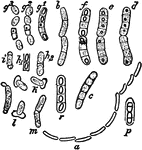
Bacillus Megaterium
"a, a chain of motile rodlets still growing and dividing (bacilli). b, a pair of bacilli actively growing…
Dredge Machine
"A machine used for clearing out or deepening the channels of rivers or harbors. Dredging-machines are…
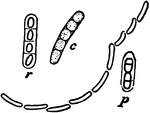
Bacillus Megaterium
"A chain of motile rodlets still growing and dividing (bacilli)." — The Encyclopedia Britannica,…

Ball-bearing Hub
"A ball-bearing hub with outward cups. The hub-shell H is turned out of mild steel, and the cups C are…

Cup-adjusting Hub
"One end of the cup-adjusting hub, with inward bearings. The cones are formed of one piece with the…
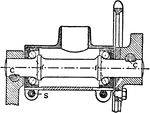
Crank-axle Bearing
"The usual form of crank-axle bearing which has inward-cups and is cup-adjusting. The end of the bracket…
Bicycle Chain
"The "block" chain consists of a series of central blocks connected by side plates." — The Encyclopedia…

Bicycle Chain
"The "roller" chain consists of a series of outside and inside links. The outside link A is made up…
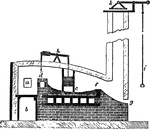
Puddling Furnace
"The general arrangement of a puddling furnace; a is the charging door for the fuel, d the bridge with…

Puddling Furnace
"The general arrangement of a puddling furnace; a is the charging door for the fuel, d the bridge with…

Chain-Pump
"The chain-pump consists of a tube or cylinder, the lower part of which is immersed in a well or reservoir,…
Egyptian Chain
"A gold chain is formed of wires closely plaited and very flexible, the ends terminating in the heads…
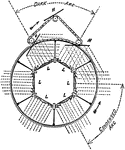
Repeating Light
"Plane mirrors M revolve on an endless chain placed outside of the apparatus and alter the direction…
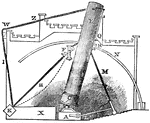
Telescope
"The following description of a section of Lord Rosse's telescope, though not so perfect as could be…

The Battle of Constantine
From a Fresco in the " Sala di Constantino, " in the Vatican, Rome. The scene is laid on the left bank…
